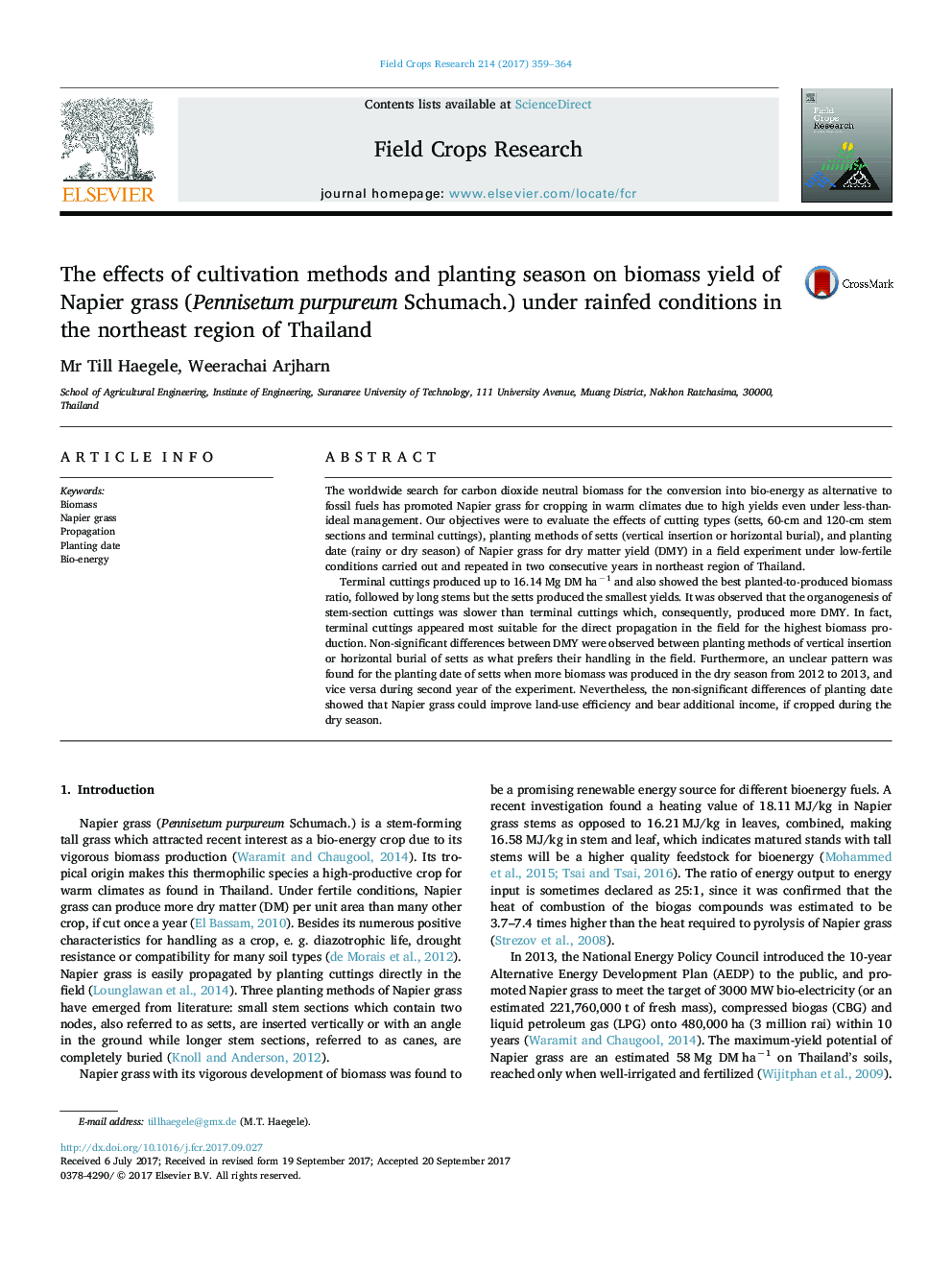| Article ID | Journal | Published Year | Pages | File Type |
|---|---|---|---|---|
| 5761399 | Field Crops Research | 2017 | 6 Pages |
Abstract
Terminal cuttings produced up to 16.14 Mg DM haâ1 and also showed the best planted-to-produced biomass ratio, followed by long stems but the setts produced the smallest yields. It was observed that the organogenesis of stem-section cuttings was slower than terminal cuttings which, consequently, produced more DMY. In fact, terminal cuttings appeared most suitable for the direct propagation in the field for the highest biomass production. Non-significant differences between DMY were observed between planting methods of vertical insertion or horizontal burial of setts as what prefers their handling in the field. Furthermore, an unclear pattern was found for the planting date of setts when more biomass was produced in the dry season from 2012 to 2013, and vice versa during second year of the experiment. Nevertheless, the non-significant differences of planting date showed that Napier grass could improve land-use efficiency and bear additional income, if cropped during the dry season.
Related Topics
Life Sciences
Agricultural and Biological Sciences
Agronomy and Crop Science
Authors
Mr Till Haegele, Weerachai Arjharn,
